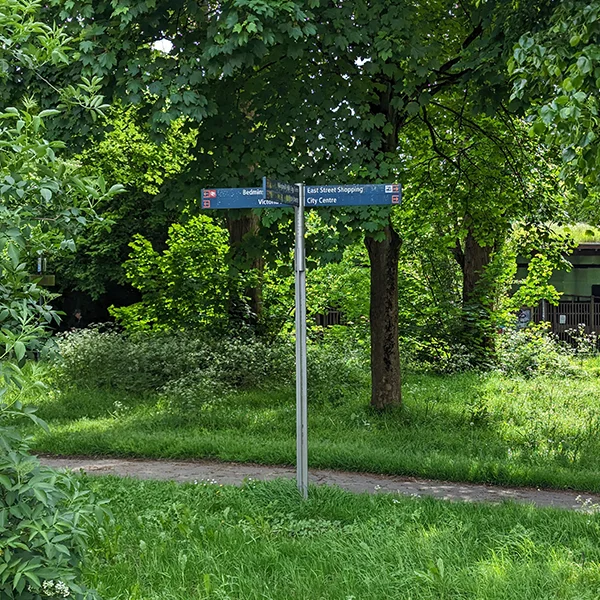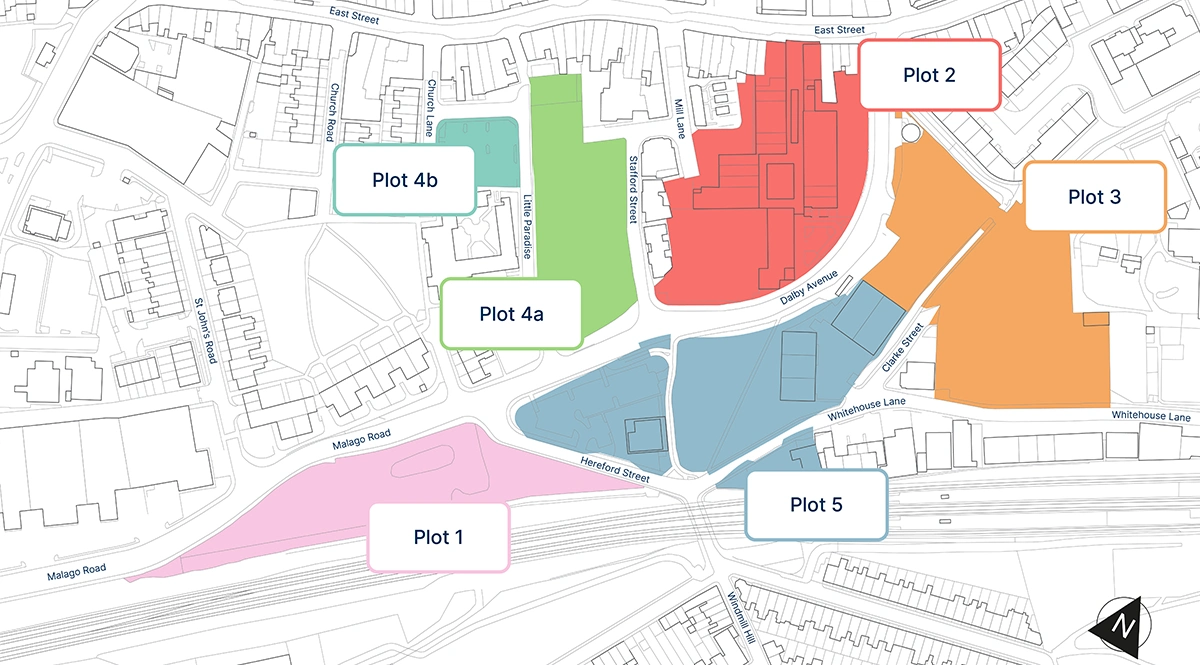Bedminster Green development
Bedminster Green is a development area made up of five sites (plots) that are being redeveloped with residential-led, mixed-use schemes.
The development area includes the Hereford Street and Little Paradise car parks, the land surrounding the area of grass known as Bedminster Green, the former car park sitting in between Dalby Avenue and Windmill Hill City Farm, the former Pring and Hill site next to the Sheene Road junction, St Catherine’s Place and the land next to the west of the precinct.
Artist impression credit: Hodder and Partners
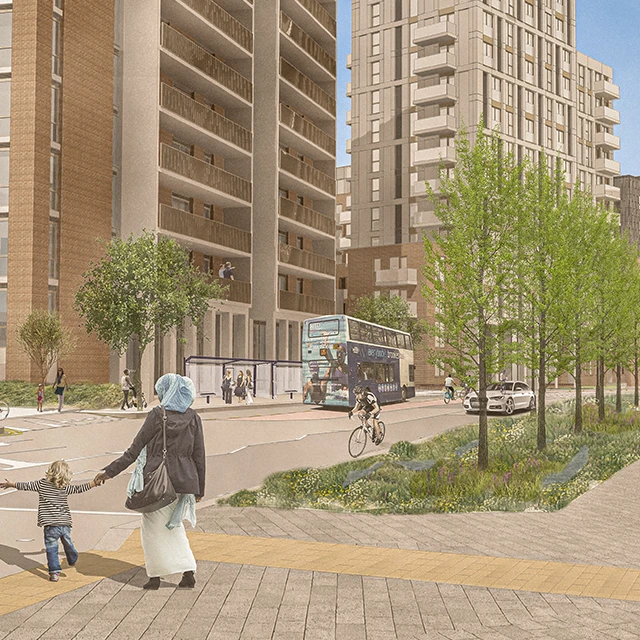
Bedminster Green plots
The five sites (plots) are being redeveloped with residential-led, mixed-use schemes. Construction has already begun and is expected to continue until 2027.
New homes, heated by low carbon energy
The regeneration of the area will deliver around 1,300 new student spaces and 800 new homes, including a mix of homes for rent on the open market and to buy through shared ownership as well as homes available for social rent. The properties will be a mixture of one to three bedroom apartments and will bring around 3,500 new residents to the area.
In line with Bristol’s ambitious goals to tackle the climate emergency, Bedminster Green’s new homes will be connected to the city’s low-carbon District Heat Network, ensuring the homes are provided with a reliable and low carbon source of heat.
Work includes installing the underground infrastructure needed to deliver the District Heat Network for Bedminster Green and the surrounding areas. Highly insulated pipework is being installed within the highway, ready to export heat from sustainable generation sources to homes and businesses in the area.
Bedminster Green homes will be within easy reach of Victoria Park to the south and the shops of East Street to the north, and will be in walking or wheeling distance from North Street, the city centre, and Bedminster station and Temple Meads station. Being this close will enable and encourage the new residents of Bedminster Green to live active and low carbon lifestyles.
Improved transport connections
Travelling through or around this part of the city can be a disjointed experience, which is why the regeneration of Bedminster Green has connectivity and active travel at its heart. We’re working to reduce journey times and make it easier for people travelling by foot, wheel, or public transport to come to and through the area.
We’re investing in the A38 (Dalby Avenue and Malago Road) to improve crossings, cycle lanes and bus lanes and create a more pleasant ‘avenue’ to travel along. Traffic will be able to travel in both directions along the A38 in a more efficient manner and with easy connections to nearby East Street. Cycle lanes will connect to the existing Malago Greenway and the Bishopsworth/Hartcliffe A38 cycle route.
As well as the road, we’re improving the pavements and public spaces, widening the space for pedestrians. We’re planting shrubs and trees which will encourage biodiversity, provide shade, and soak up excess surface water.
We are working to improve the connection to Bedminster station, making it easier for people to access Bedminster Green and East Street by train. As plans for Metrowest progress, the trains servicing Bedminster will increase in frequency, linking the area to Weston Super Mare in the west and Bristol Temple Meads to the east. For the students who will call Bedminster Green home this represents a direct link to the new University of Bristol campus which is being built at Temple Quarter.
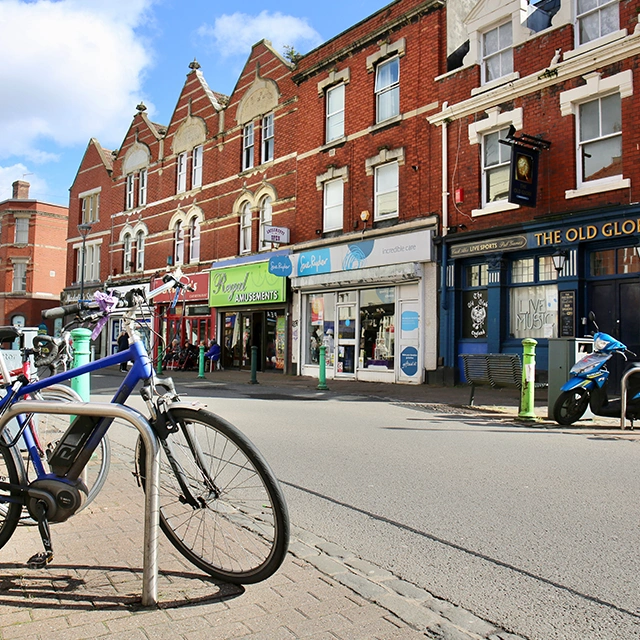
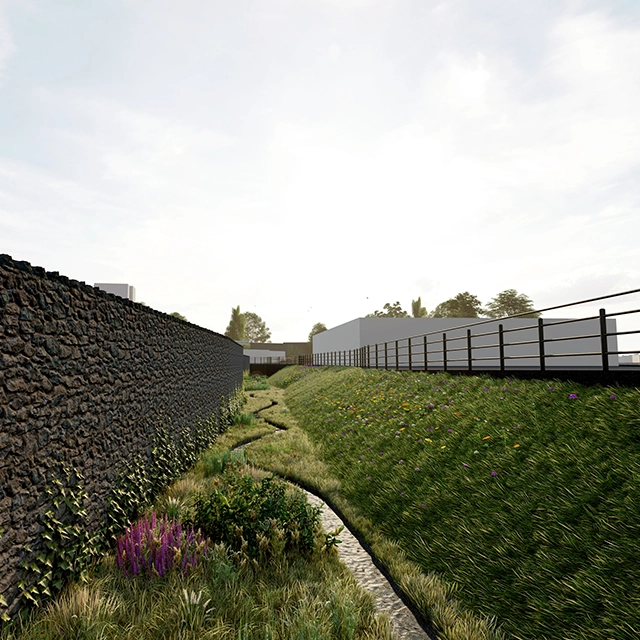
Restoring the River Malago
Although running largely below ground, the River Malago is a key Bedminster landmark and is a big part of the area’s history. We want the people of Bedminster to be able to enjoy the river, as well as providing effective stewardship to look after its ecosystems and manage flood risk.
As part of the Bedminster Green regeneration, the River Malago will be brought up from its underground tunnels and will see much of its natural habitats restored. The River Restoration project is being delivered by Bristol City Council to improve flood resilience, increase biodiversity, and create a new river park, complete with amphitheatre seating and a boardwalk for visitors to enjoy.
We’re taking care of the historic infrastructure of the river – replacing channel walls and restoring its original ‘penstock’ lock gates that managed the flow of the river to the factories of Bedminster which it drove. We’re also working to restore natural ‘riffles’ and native planting to encourage biodiversity back into the river.
These works will reduce flood risk by lowering some ground levels to create a submergible area that will fill with water when there is heavy rainfall. A trash screen will also be installed to trap any debris and prevent blockage and backing up of water.
These changes were consulted on in early 2021, with high levels of public support for the proposals. See further detail on the results of the public consultation at Bedminster Green River Restoration and Transport Consultation.
The planning application is being considered and can be viewed on the council’s website using the application number 23/00611/FB.
Increasing biodiversity and canopy cover in the area
Opening up and enhancing the Malago will create sustainable drainage, urban cooling, wellbeing and habitats. Flood attenuation and flood management potential will be increased to benefit the neighbourhood.
Enhancing habitats with street trees, improving green spaces, and using pollinating and other planting will improve biodiversity.
Creating a green network from Victoria Park, past Bedminster station, to smaller green spaces and streets using trees, the river and planting will create an attractive and varied green route for people and wildlife.
